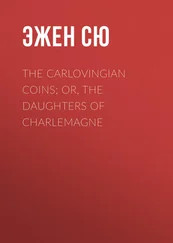When the room returned to Naomi, there were still horses in it, raging and panicked. She had time to sit at a breathless table with the gaol governor and plead with him to let Ian out to save the horses. The man was stupid and could not see the urgency which grew in her, the greatest agony of her life. The ship pitched till she and the asinine gaol governor and the men and women and horses slid into the sea which felt of nothing. Thus she went down. Roaring for breath.
Since both the Durance girls knew, without knowing the other did, that there was the smallest membrane between alternate histories of themselves—between the drowning and the floating, between the fevered and the convalescent—it was somehow appropriate that two contradictory reports appeared in the Macleay Valley’s papers—the Argus and the Chronicle.
The Argus read, “Mr. Durance of Sherwood has received the sad news that his daughter Naomi has died of a prevailing influenza while serving as a nurse in France. The Argus and all its readers extend their sincerest sympathies…”
The Chronicle read, “Mr. Durance, a well-respected farmer of Sherwood, has been informed that his daughter Sally (Sarah) has died of a congestive disease while serving our gallant soldiers as a nurse in France. The Chronicle and its readers extend to Mr. Durance their…”
A few days later Mrs. Durance (formerly Sorley) dropped into the newspaper offices. The names had been mixed up, she told them. But that seemed to create further confusion.
The Argus printed a report that said, “The Argus regrets its earlier notification that Nurse Naomi Durance has died in France. It was her sister, Sally, who regrettably succumbed to influenza. The Argus apologizes to the Durance family and again extends its sincerest…”
While the Chronicle declared, “The Chronicle regrets that it was mistaken in reporting the death of Sally (Sarah) Durance of influenza while she was serving as a nurse in France. It was her sister, Naomi, who has died in the service of our valiant young men and of Australia, which this paper chooses to see as a separate entity to the Empire. But, rising above politics, we apologize to Mr. Eric Durance of Sherwood and offer our most heartfelt…”
Thus from the start people were confused. When they mentioned the Durance sisters—as they did infrequently—they were uncertain which of the girls had gone under to the Spanish influenza. It was known that the other one had married a man from Sydney or Melbourne, a returned soldier. One of them had been involved with the Condons, but the Condons were gone from the valley—the solicitor to join his brother’s more extensive practice in Orange. They could not be conferred with on the matter.
The new Mrs. Durance had in a way lost one of her children too. Ernest was not the same boy when he came back from France. He spent a lot of time drinking with other repatriated soldiers at the Federal Hotel and then wandering down to the railway station to chat drunkenly in the refreshment room with any train passengers who were survivors of the war and who happened to be having a meal there during the half hour the Brisbane Mail sat at the station. Ernest had vanished by the end of 1920—off to Queensland, it was said.
So which of the sisters died and stayed in French soil? It was a question anyhow on which people expended some interest, but not a great amount. Out of politeness, they did not ask Mr. or Mrs. Durance.
• • •
But taking into account the membrane between alternate versions—of which Sally herself had become so convinced after the sinking of the Archimedes, believing that though she had survived, there was a parallel world of chance in which she had not—we can venture to say that at the end of the Australian summer of 1922 wealthy businessman, part-time painter, and printer of fine books Eddie Horowitz laid on a gallery for an exhibition by Charlie Condon.
When Charlie and Sally had first returned from Paris, the going had been hard for them. Sally worked at Sydney Hospital to give Charlie the breathing space homecoming always required. Paris had been in its way difficult too. But the excitement of beginning there—at the epicenter of art—had intoxicated them for a time. It was strange nonetheless that the British painters, the Americans, and the few Australians lived almost entirely in their own clique. They got together often to talk English or take holidays on the coasts of Normandy and Brittany—and thus to shy away from confronting the great alps of recent European achievement. The Americans were fascinated by Charlie’s missing arm—though rather than pin up his sleeve, he used a prosthesis and a glove over an artificial hand in an attempt to put paid to the issue. The British took missing limbs more for granted. So it was not out of false sympathy that Charlie had two paintings exhibited in the Royal Academy in 1921. This provided the modicum of validation needed for the artist to keep going and for his wife to continue in her original faith. He was also invited to exhibit at the Chelsea Arts Club. Though at that stage Sally had been offered a job nursing at the English Sanatorium in Paris, Charlie insisted that she should not waste her French experience on drudgery.
The parties they went to in Paris could become difficult. Spirits—particularly cheap spirits, which were all they could afford—made Charlie irascible. Then, when they got home to their one-room apartment, there were the sort of night sweats and dreams that all the women of the soldiers of the world endured at secondhand.
Painting French forests and seasides and pastures was an education rather than a career, Charlie began to assert. When it became apparent to him and Sally that the honest and essential thing was to go home, they knew it would not be an easy business. The English artists who went home had the certainty that they could swan back to Paris whenever they liked. The Australians had the greater certainty that their decision was a choice—very nearly—for life.
But within a few months of Charlie and Sally getting back to Sydney, Eddie Horowitz had given Charlie’s French work a cachet and was now trying to do his Australian coastal landscapes the same favor. Cachet in Sydney was not like cachet in Paris. But it would have to do. With the weight of the congealed Australian summer’s heat on them, they rented a flat by the sea in Bronte. As Charlie had predicted, the light in Bronte made Wimereaux and Boulogne look sick by comparison, but still there was a vacancy in the air above them. The imagination had not filled it to the same extent to which those atmospheres had been filled. But then the air of France was filled with the dream of war and mangling, as well as the dream of light.
When Eddie Horowitz first saw Charlie’s work, he introduced him to the Society of Artists in Sydney and the Australian Watercolor Institute. He also tried to get him a part-time job imparting sketching skills to the students of the Teachers’ College and he found him a studio in George Street to share with a number of other artists. The only thing Eddie could not do was cause his business partners—and the businesspeople he invited to the exhibition—to buy Charlie’s paintings and make Charlie’s name.
Charlie was sufficiently impressed by the seriousness of the night of the exhibition opening to have bought a new suit. He understood by now the impact drink had on his behavior and despite the stress of the occasion remained utterly sober that night. He had given instructions to Eddie that in no press—as little as there might be—were his war wounds to be mentioned. He did not want to be written up as a freak—the one-handed artist. I only started to paint properly after I lost the left arm, you stupid bastard, he had cried to an American artist at a party in Paris—and he’d had to be taken home.
Читать дальше












